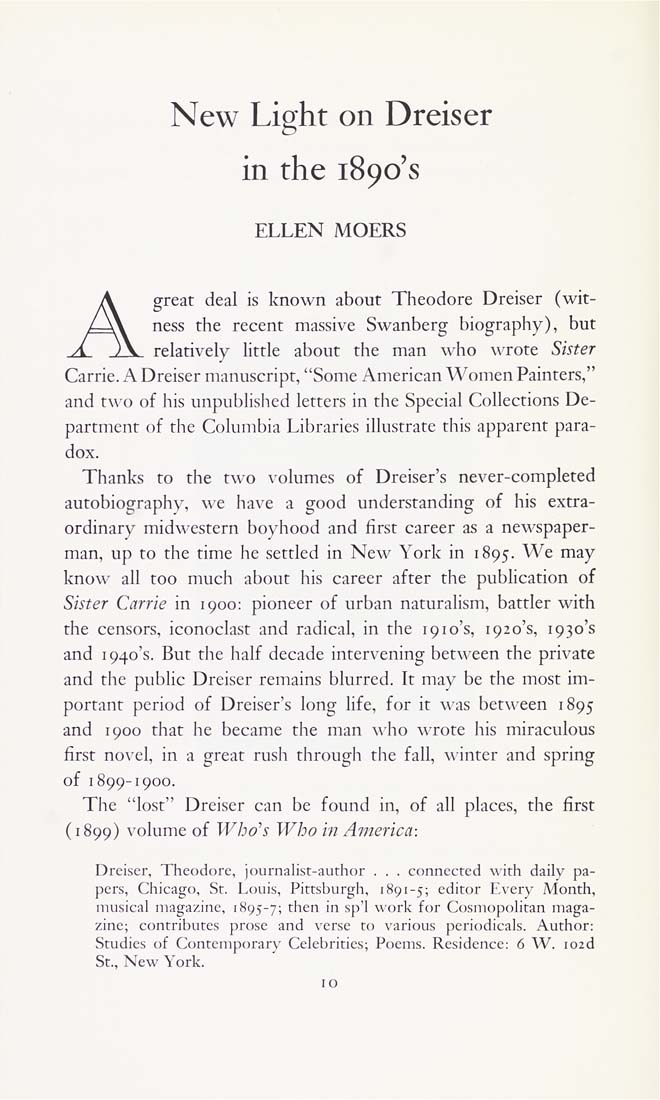Columbia Library columns (v.15(1965Nov-1966May))
(New York : Friends of the Columbia Libraries. )
|
||
|
|
|
|
| v.15,no.3(1966:May): Page 10 |

New Light on Dreiser in the 1890's ELLEN MOERS great deal is known about Theodore Dreiser (wit¬ ness the recent massive Swanberg biography), but relatively little about the man wdio wrote Sister Carrie. A Dreiser manuscript, "Some American Women Painters," and two of his unpublished letters in the Special Collections De¬ partment of the Columbia Libraries illustrate this apparent para¬ dox. Thanks to the two volumes of Dreiser's never-completed autobiography, we have a good understanding of his extra¬ ordinary midwestern boyhood and first career as a newspaper¬ man, up to the time he .settled in New York in 1895. We may know all too much about his career after the publication of Sister Carrie in 1900: pioneer of urban naturalism, battler with the censors, iconoclast and radical, in the 1910's, 1920's, 1930's and 1940's. But the lialf decade intervening between the private and the public Dreiser remains blurred. It may be the most im¬ portant period of Dreiser's long life, for it w;is between 1895 and 1900 that he became the man who wrote his miraculous first novel, in a great rush through the fall, winter and spring of 1899-1900. The "lost" Dreiser can be found in, of all places, the first (1899) volume of Who's Who in America: Dreiser, Theodore, journahst-aiirhor . . . connected w-ith daily pa¬ pers, Chicago, St. Louis, Pittsburgh, 1H91-5; editor Every Month, musical magazine, 1H95-7; then in sp'l work for Cosmopolitan maga¬ zine; contributes prose and verse to various periodicals. Author: Studies of Contemporarv Celebrities; Poems. Residence: 6 W. lozd St., New York. |
| v.15,no.3(1966:May): Page 10 |







